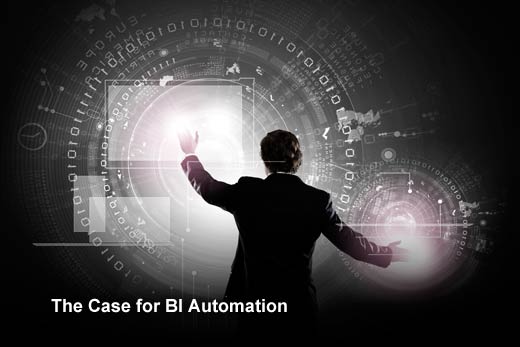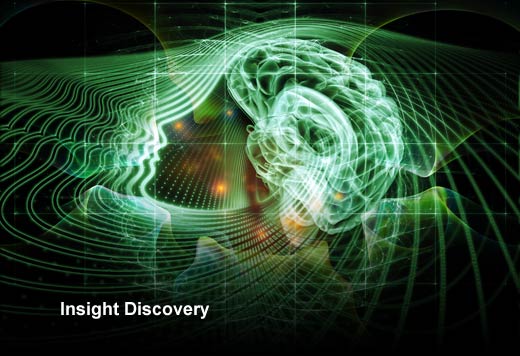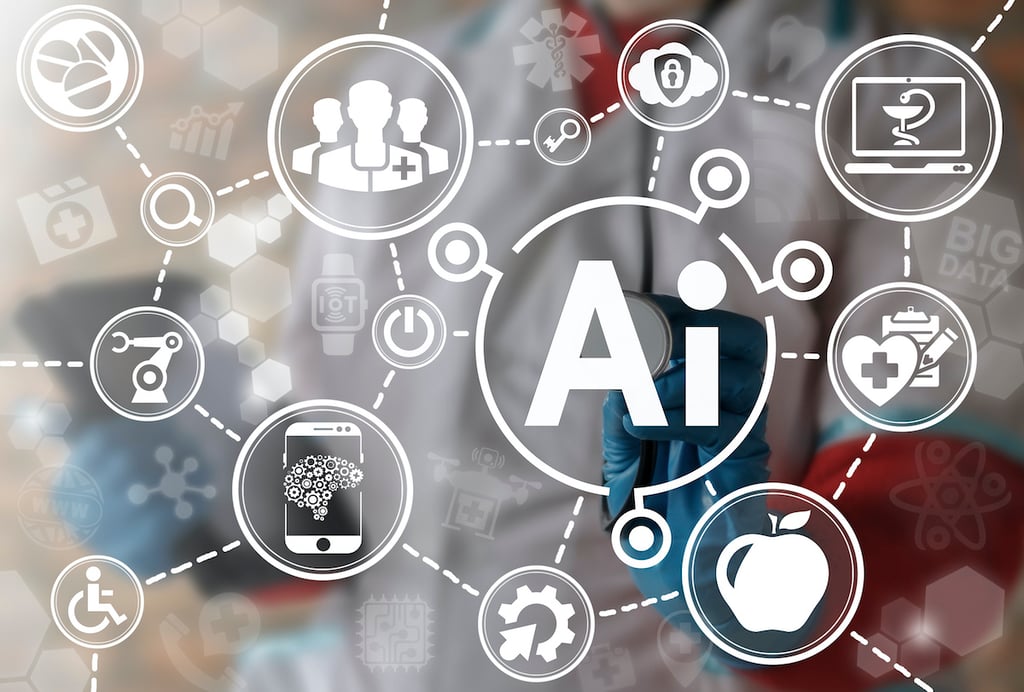Business intelligence (BI) applications have been around for a long time, and they’ve changed the way organizations process and analyze information. Business users tap directly into unprecedented amounts of data and quickly get reports, dashboards and visualizations – but many struggle to garner the specific results needed to make better decisions. For instance, business users are still required to ask questions and slice-and-dice data to “fish” for the answers and insights necessary to run their organization. The complexity and overwhelming volume of Big Data has many organizations wondering what questions they should be asking. Further still, business intelligence systems often produce so much analysis and raw data that it’s difficult to identify the insights that will make an actual impact.
Automation with artificial intelligence solves these problems. For instance, customers of SaaS products may want to know how their company is doing versus peers who use the same product. Artificial intelligence can automate benchmarking questions to find the answers in the data. Since all data can be reported anonymously and automatically, the benchmarking analysis remains in accordance with the privacy policies of its customers.
As an IT leader, you’ll want to know: What will it take to automate the intelligence of today’s BI systems to capitalize on enterprise Big Data? How can we convert the 70 percent of business users that currently do not use business intelligence tools? What automation capabilities are essential to enable business users to focus on strategically applying intelligence to the business (rather than obtaining and analyzing data)?
In this slideshow, Jim Berardone, chief customer officer at OnlyBoth, has highlighted how automation can help IT leaders extend the power of business intelligence to business users.

The Case for BI Automation
Click through for insights into how automation can help IT leaders extend the power of business intelligence to business users, as identified by Jim Berardone, chief customer officer at OnlyBoth.

Insight Discovery
Automate the discovery of insights.
Business intelligence software should know what questions to ask, and instantly find valued insights without human effort. Artificial intelligence can do this by automating the logic and reasoning of discovery. With artificial intelligence and the horsepower of computers, business intelligence software can look at all possibilities in the data, not just what the user thinks of or has time to do.

Insight Synthesis
Automate the ranking of insights.
When you automate discovery, many more insights will be found. Google has its PageRank algorithms that highlight the most relevant web pages, and similarly, automated business intelligence software can emphasize the most noteworthy insights for decision-making purposes. Further, artificial intelligence can recognize the relationships between insights, making it easier for users to analyze multiple insights simultaneously.

Universal Language
Automate the writing of insights.
Yesterday’s business intelligence technologies have done a great job of quickly generating impressive dashboards, tabular reports, graphs and visualizations — but they cannot decipher insights. It’s still up to the user to pinpoint the insight on these artifacts and then communicate it in their own words, leaving room for misinterpretation. Artificial intelligence can take business intelligence software the last mile and communicate insights, in easy-to-understand English. Graphs and other visualizations will only be used to illustrate a factual and widely understood answer.

Universal Accessibility
Create a Google-like experience.
Why can’t finding an insight in data analysis be as simple as using Google search to find a page on the web? With artificial intelligence, it can be. When business intelligence is automated, every business user can push a button and get the results of an expert without delay. As a result, business users would not require any training or data science know-how to make informed decisions.

Rely on data to remove margin for human error and opinion.
When using artificial intelligence, data will drive automation and users will be removed from extracting insights to decrease margin for human error. User error can be caused by biased choices, simplifying assumptions, inaccurate perceptions, outdated beliefs, bad habits, and personal opinions. Automation by artificial intelligence eliminates the aforementioned factors, minimizing the risk that results will be missing information or influenced by bias.

Embedded Insights
Easily reference automated findings to maximize efficiency.
Automation with artificial intelligence makes it possible to easily integrate insights into the applications used by business users. When insights are presented at the point-of-use, users may never need to use a business intelligence tool directly. With automation, business intelligence software becomes an engine for other software. Day-to-day business processes become more efficient and productivity increases. Decision-makers spend less effort on business intelligence work, and put more effort into making important choices for the organization.















